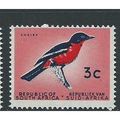Paris - International Exposition 1937 Italian Pavillion
- Condition : Used
- Dispatch : 2 Days
- Brand : None
- ID# : 33207664
- Quantity : 1 item
- Views : 6296
- Location : United Kingdom

- Seller : justthebook (+1703)
- Barcode : None
- Start : Tue 02 Nov 2010 09:45:45 (BST)
- Close : Run Until Sold
- Remain : Run Until Sold
More Listings from This Seller view all
Seller's Description
- Postcard
- Picture / Image: Exposition Internationale, Paris 1937 - Pavillon de l'Italie
- Publisher: H. Chipault
- Postally used: no
- Stamp: n/a
- Postmark(s): n/a
- Sent to: n/a
- Notes & Key words:
------------------------------------------------
Postage & Packing:
UK (incl. IOM, CI & BFPO): 99p
Europe: £1.60
Rest of world (inc. USA etc): £2.75
No additional charges for more than one postcard. You can buy as many postcards from me as you like and you will just pay the fee above once. (If buying postcards with other things such as books, please contact or wait for invoice before paying).
Payment Methods:
UK - PayPal, Cheque (from UK bank) or postal order
Outside UK: PayPal or Google Checkout ONLY please. NO non-UK currency checks or money orders (sorry).
NOTE: All postcards are sent in brand new stiffened envelopes which I have bought for the task. These are specially made to protect postcards and you may be able to re-use them. In addition there are other costs to sending so the above charge is not just for the stamp!
----------------------------------------------
Text from the free encyclopedia WIKIPEDIA may appear below to give a little background information:
*************
The Exposition Internationale des Arts et Techniques dans la Vie Moderne (International Exposition dedicated to Art and Technology in Modern Life) was held in 1937 in Paris, France. The Musée de l'Homme was created at this occasion.
Among the most notable exhibitions of the fair was the Spanish Pavilion. The fair took place during the Spanish Civil War; the pavilion of the embattled Second Spanish Republic included Pablo Picasso's famous painting "Guernica", a depiction of the horrors of war.
Two of the other notable pavilions were those of Nazi Germany and the Soviet Union. The organization of the world exhibition had placed the German and the Soviet pavilions directly across each other. Hitler had desired to withdraw from participation, but his architect Albert Speer, who had by coincidence seen the Soviet pavilion plans while visiting Paris, convinced him to participate after all, showing Hitler his plans for the German pavilion.
Plagued by delay, at the opening day of the exhibition, only the German and the Soviet pavilions were completed. This, as well as the fact that the two pavilions faced each other, turned the exhibition into somewhat of a personal competition between the two great ideological rivals.
Five hundred feet high, Speer's pavilion was completed by a tall tower crowned with the symbols of the Nazi state: an eagle and the swastika. The pavilion was conceived as a monument to "German pride and achievement". It was to broadcast to the world that a new and powerful Germany had a restored sense of national pride. At night, the pavilion was illuminated by floodlights. Speer later revealed in his autobiographies that he had had a clandestine look at the plans for the Soviet pavilion, and had designed the German pavilion to represent a bulwark against Communism.
Vera Mukhina designed the large figurative sculpture on the Soviet pavilion for the exhibition, whose architect was Boris Iofan. The grand building was topped with a large momentum-exerting statue, of a male worker and a female peasant, their hands thrusting a hammer and a sickle together, in a symbol of communist union.
Listing Information
| Listing Type | Gallery Listing |
| Listing ID# | 33207664 |
| Start Time | Tue 02 Nov 2010 09:45:45 (BST) |
| Close Time | Run Until Sold |
| Starting Bid | Fixed Price (no bidding) |
| Item Condition | Used |
| Bids | 0 |
| Views | 6296 |
| Dispatch Time | 2 Days |
| Quantity | 1 |
| Location | United Kingdom |
| Auto Extend | No |




 for 1 item(s)
for 1 item(s)

















